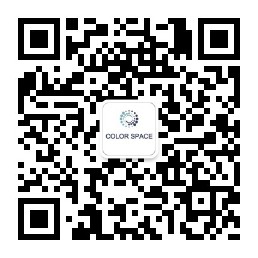With the development of automotive intelligence and smart cockpit technologies, in-vehicle HUD (Head-Up Display) has evolved from a "premium feature" in high-end vehicles to a critical function in the automotive industry's shift towards intelligence. HUD technology projects essential driving information onto the windshield, allowing drivers to access key data without taking their eyes off the road, thus improving driving safety and convenience.
However, the lighting environment significantly impacts the display performance of in-vehicle HUDs, especially in terms of brightness, contrast, color accuracy, and the stability of virtual imaging. To address these challenges, HUD technology needs breakthroughs in optical design, environmental adaptability, and projection system optimization, including the following issues:
1. Strong direct sunlight interference:Under direct sunlight at midday or in highly reflective environments, HUD images may become blurry, washed out, or even completely invisible.
2. Optical interference issues:Multi-angle light reflections can cause HUD image ghosting or optical interference, which negatively affects the driver's visual experience.
3. Dynamic lighting environment adaptability:From day to night or from tunnels to outdoor settings, the HUD must adapt to a variety of complex lighting conditions, ensuring that the image remains clear and visible at all times.
4. Color deviation:Changes in ambient light color temperature (e.g., differences between daylight and car headlights) can lead to inaccurate color display on the HUD.
5. Virtual image stability:Under varying lighting conditions, the virtual imaging distance and stability of the HUD may be impacted.
The CS-LE550-G Full-Spectrum Collimated Solar Light Simulator is a professional light source device designed by ColorSpace specifically for in-vehicle HUD (Head-Up Display) system optical performance testing. This light source provides lighting conditions that closely mimic natural sunlight by precisely controlling the spectrum, brightness, and color temperature. It simulates real-world lighting conditions, enabling in-vehicle HUD systems to undergo optical performance tests and verification in the laboratory, such as testing for direct sunlight exposure, optical interference, and dynamic light adaptability.

1. Accurate Simulation of Natural Solar Spectrum: Spectral range from 350nm to 1100nm, with spectral weight distribution closely resembling natural sunlight.
2. High Brightness Light Output:Light source brightness from 20,000 to 150,000 lux (measured at 2 meters), capable of meeting HUD brightness response testing and dynamic range verification requirements.
3. Solar Direct Light and Optical Interference Testing:Precisely simulates direct sunlight conditions, assessing the HUD system's resistance to interference under high brightness, and recreating conditions to address image blurring and optical ghosting issues.
4. Dynamic Lighting Environment Adaptability Assessment:Simulates lighting conditions in various driving scenarios such as day, night, and tunnel environments, validating the stability and performance of the HUD under varying light conditions.
5. Flexible Customizable Control: Provides open interfaces to support custom development.
1. In-vehicle Display and Optical System Testing
(HUD optical performance testing, in-vehicle display and center console screen testing, in-vehicle camera and sensor testing)
2. Biological Research and Plant Photosynthesis Experiments
(Simulating plant growth environments, studying animal behavior and light influence, researching microbial light reactions)3. Light Source Rooms and Material Testing
(Material light-aging tests, simulating environmental conditions in light source rooms)4. Photovoltaics and New Energy
(Photovoltaic cell performance testing, solar thermal system validation)5. Display and Imaging Device Performance Testing
(Tablet, smartphone, and monitor testing, camera and optical equipment testing)6. Aerospace Optical Performance Testing
(Aviation display systems and cockpit optical equipment testing, aerospace material irradiation experiments)
For more information, please contact: sales@colorspace.com.cn

Follow [ColorSpace] for industry news/events/solutions
Contact: sales@colorspace.com.cn
Phone: 15817270587
Tel: 400-886-3881(周一至周五 9:00~18:00)
Email: sales@colorspace.com.cn
Add: South Building #2-1101, Lv Di Qi Hang Office Building, Hou Sha Yu, Shun Yi District, Beijing, China